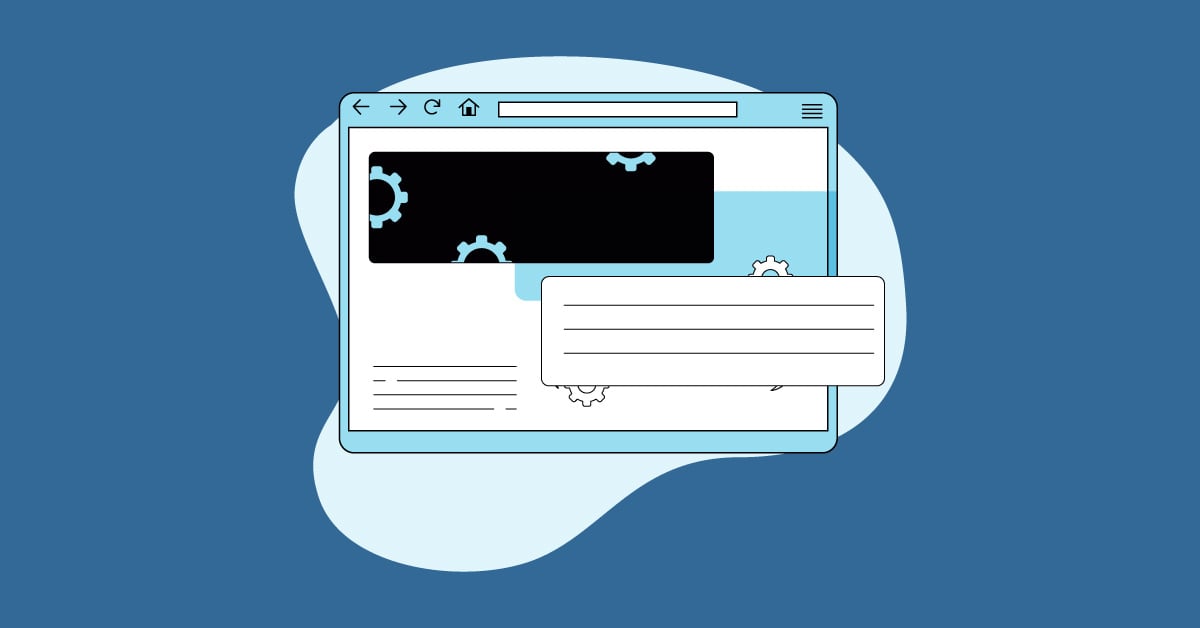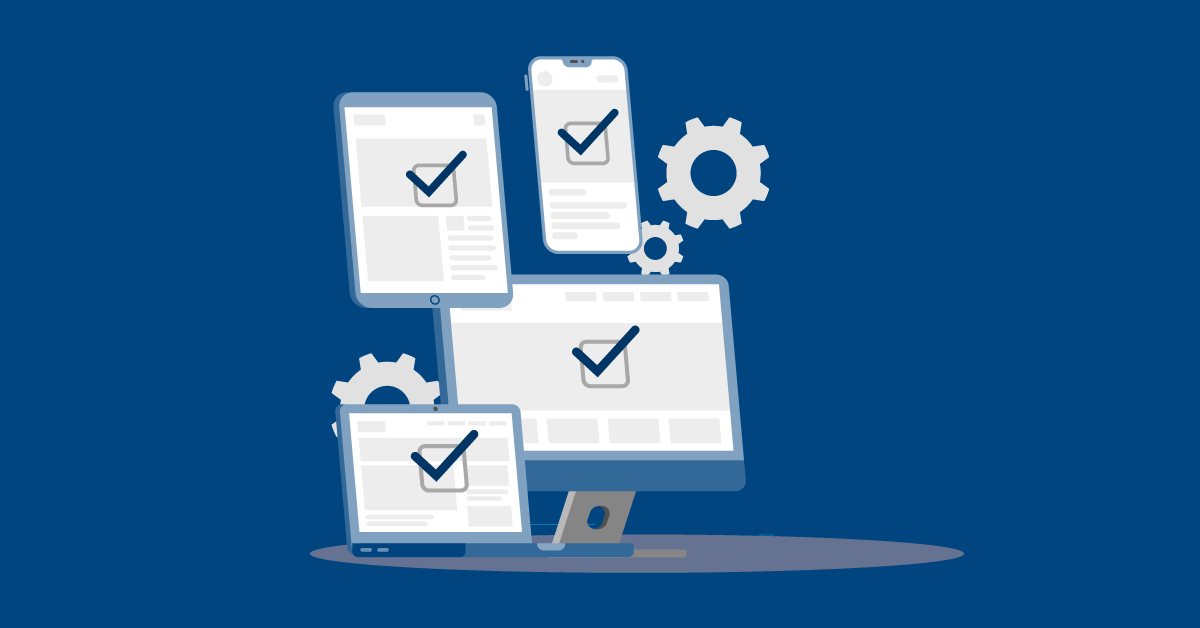End-to-End vs Integration Testing: A Quick Guide
Author: Laveena Ramchandani
Published: November 13, 2024

Table of Contents
The terms end-to-end (E2E) and integration testing often cause some confusion in engineering teams. While they may seem similar, each has a distinct focus and purpose, addressing different aspects of system functionality and user experience. Although both testing types may overlap in scope and objectives, neither replaces the other and they’re complementary and offer unique insights for quality assurance.
End-to-End Testing is primarily about user-centric workflows. It simulates real user journeys across an entire system to ensure the application behaves as expected from start to finish. For instance, an E2E test for an e-commerce site might check whether a customer can browse items, add them to their cart, checkout, and receive an order confirmation. By covering the full scope of a workflow, E2E testing reveals any system-wide issues that could impact the user experience.
Integration Testing, in contrast, focuses on connections between system components rather than entire workflows. Here, the objective is to ensure that different modules, services, and APIs communicate and work together as intended. For example, integration testing for a banking application might verify that data flows directly between the front-end interface and backend database when a customer checks their account balance. It also assesses the reliability of external integrations, such as third-party payment gateways or API-based services, confirming they interact seamlessly within the system.
Key Differences:
- Scope: E2E testing is broader, covering complete user workflows, while integration testing focuses on component interactions.
- Objective: E2E aims to validate user experience across the application, whereas integration tests ensure stable connections and interactions between parts.
- Execution: Integration testing often happens earlier, verifying that modules are communicating well, while E2E testing usually comes later, ensuring the whole system meets customer expectations.
Using both approaches can help your team balance depth and breadth in testing, enhancing both system reliability and user satisfaction.
The Benefits of End-to-end Testing
End-to-end (E2E) testing is more than just a box to check, it is more of an invaluable strategy for ensuring that software functions seamlessly for users across all stages of a workflow. Let’s dive into why E2E testing is crucial for delivering a reliable, robust, and user-centric product.
I as a tester have been involved in end-to-end testing for a decade. Back in the day this was something that we would need one to two months of work before we would release a product, however, things now have changed making the process faster with automation or even exploratory testing. But what are the benefits? Why should we push for this?
- Validates Real-World Scenarios - One of the biggest benefits of E2E testing is its emphasis on mimicking actual user behavior. It tests the application from start to finish, ensuring that each component interacts correctly within the ecosystem. This approach helps you catch unexpected bugs that users might encounter in production environments but that wouldn’t surface in unit or integration tests.
- Increases Confidence for Production Releases - With E2E testing, you can simulate how users interact with your application, catching flaws that could disrupt the user journey. This kind of testing offers confidence that critical user flows such as login, purchasing, or account settings. For example, companies like Netflix and Amazon, known for highly reliable user interfaces, rely on thorough E2E testing before any release to ensure the interface and backend work smoothly across all customer touchpoints.
- Improves Cross-Platform and Cross-Browser Compatibility - Applications today are accessed from various devices, operating systems, and browsers. E2E testing allows you to test across different environments and platforms, confirming that your application provides a consistent experience for all users. Imagine testing for a flight booking site like EasyJet’s across devices and browsers—E2E testing can ensure a consistent, bug-free experience across all customer interactions.
- Detects Complex Dependencies and Integration Issues - E2E testing examines the interaction between multiple systems and services that an application might depend on, such as databases, third-party APIs, or payment gateways. By ensuring these integrations work well together, you reduce the risk of critical failures once the application is in production. This is especially beneficial for applications like e-commerce platforms, where each dependency needs to function cohesively.
- Saves Time and Resources in the Long Run - While E2E testing can be resource-intensive, its long-term benefits outweigh the initial investment. It allows early detection of critical issues that, if left unchecked, could lead to costly fixes post-deployment. For example, a bug that affects the checkout process of an e-commerce app is much easier (and cheaper) to fix during testing than after it affects actual sales.
- Enhances Overall User Satisfaction - At the end of the day, E2E testing provides peace of mind that your application is optimized for an excellent user experience. When your software reliably delivers a frictionless experience, users are more likely to trust and engage with your product.
.jpg?width=1200&length=1200&name=12_Dec_Carrousel01_01%20(1).jpg)
.jpg?width=1200&length=1200&name=12_Dec_Carrousel01_02%20(1).jpg)
.jpg?width=1200&length=1200&name=12_Dec_Carrousel01_03%20(1).jpg)
.jpg?width=1200&length=1200&name=12_Dec_Carrousel01_04%20(1).jpg)

Scope of End-to-End Testing
E2E testing should cover:
- Performance and Scalability: Ensures the software can handle high user loads, data volumes, and heavy workloads.
- Functionality: Verifies all app features work correctly and integrate well with other systems.
- Usability: Checks that the UI is intuitive and user-friendly.
- Security: Confirms data protection and prevents unauthorized access or breaches.
The Benefits of Integration Testing
Integration testing is often underappreciated in the software testing process but plays a crucial role in making sure components work well together. Unlike unit tests, which focus on isolated pieces of code, integration testing ensures that these pieces interact as expected in a real environment. Here’s a look at some of the key benefits of integration testing.
- Uncovering Communication Issues Between Modules - Integration testing shines a spotlight on how different parts of the system interact. By focusing on these "handshake" points, such as API calls or data transfers between services, integration testing catches issues that unit tests might miss. For example, it could detect that while a function correctly retrieves data, it doesn't properly display it on the user interface—an issue that would only be visible when components are combined.
- Reducing Risk in Complex Systems - Complex applications are often made up of interdependent modules. Each module might work perfectly alone, but integrating them can introduce unforeseen issues. Integration testing is key to identifying and addressing these issues before they hit production. For instance, a financial application with separate modules for login, transaction processing, and notifications might fail if one module doesn’t communicate properly with the others. Early testing can highlight these issues, preventing costly downtime or user frustration.
- Ensuring Data Integrity Across the System - Many applications involve data flowing through various parts of the system, and integration testing helps verify that data remains consistent and accurate. It checks that data produced by one module is correctly interpreted and used by another. For instance, if an online store’s inventory system doesn’t align with its shopping cart, integration testing can help catch data mismatches that could result in customers purchasing out-of-stock items.
- Improving Test Coverage - Integration testing provides a more comprehensive view of the software’s functionality by testing broader scenarios than unit tests do. While unit tests are crucial for validating the behavior of individual components, integration tests help cover the gaps by ensuring these components work as intended when connected. By simulating real-world workflows, integration tests improve the likelihood of detecting bugs that affect the user experience.
- Enhancing Overall Product Quality and User Satisfaction - Ultimately, integration testing aims to ensure that the application provides a smooth and reliable user experience. By catching issues related to module interactions, it helps prevent issues that could cause crashes or bugs in the end-user environment. This leads to a more polished, user-friendly product and minimizes customer complaints.
- Cost Savings Through Early Bug Detection - Detecting integration issues early in the development cycle can save significant time and resources. Fixing bugs that emerge from module interactions is far less costly when identified early than later in the development or production stages. With integration testing, you’re effectively reducing the likelihood of spending excessive time debugging complex interactions after deployment.
.jpg?width=1200&length=1200&name=12_Dec_Carrousel02_01%20(1).jpg)
.jpg?width=1200&length=1200&name=12_Dec_Carrousel02_02%20(1).jpg)
.jpg?width=1200&length=1200&name=12_Dec_Carrousel02_03%20(1).jpg)
.jpg?width=1200&length=1200&name=12_Dec_Carrousel02_04%20(1).jpg)
.jpg?width=1200&length=1200&name=12_Dec_Carrousel02_05%20(1).jpg)
.jpg?width=1200&length=1200&name=12_Dec_Carrousel02_06%20(1).jpg)
Scope of Integration Testing
Integration testing should cover such areas as:
- Component Interaction: Ensures modules work well together.
- Data Transmission: Confirms data flows as expected across the software.
- Error Handling: Verifies correct responses to errors, like displaying messages and maintaining stability.
Real-World Example: Integration Testing
Spotify: Ensuring Seamless Music Streaming
Spotify, with its complex microservices architecture, relies heavily on integration testing to maintain its seamless music streaming experience. Each service in their ecosystem—whether it's for music recommendations, playlist generation, or user authentication—needs to communicate flawlessly. Through integration testing, Spotify ensures that their Recommendation API correctly communicates with their User Database and Playback Services. This prevents issues such as users receiving inaccurate recommendations or experiencing streaming disruptions.
For example, during integration testing, they might validate that a newly released song appears correctly in a user’s recommended playlist and can be played without any issues, by checking the interactions between the playlist service and the song database.
Real-World Examples: End-to-End Testing
Netflix: Guaranteeing a Flawless Streaming Experience
Netflix runs extensive E2E tests to simulate a full user journey—from logging in and searching for content to selecting a video and watching it on various devices. Since Netflix integrates a variety of services (authentication, recommendation engines, media servers, and third-party content delivery networks), E2E testing ensures the entire system works cohesively.
For instance, they might simulate a user logging in on a smart TV, browsing for a movie, and streaming it while testing playback on different bandwidth speeds. If any part of this journey breaks—say, the media servers fail to stream correctly—the E2E test highlights the failure point, ensuring the system delivers a smooth user experience.
Why Both Types of Testing Matter
While Integration Testing catches issues in the data flow between specific components, End-to-End Testing verifies that the entire system works cohesively. Both approaches are essential, but they serve different purposes in the software development lifecycle.
- Spotify relies on integration tests to ensure their services work together seamlessly.
- Netflix depends on E2E testing to simulate and validate the complete user experience.
Together, these testing strategies ensure that systems are not only technically sound but also deliver a flawless, real-world experience to users.
.jpg)
Conclusion
Both integration testing and end-to-end testing play crucial roles in ensuring software quality. Integration testing ensures that individual components interact correctly, while end-to-end testing guarantees that the entire system functions as expected from a user’s perspective. To maximize quality, consider using both approaches. Integration tests help quickly identify bugs within specific connections or modules, while E2E tests ensure that real-world scenarios work as expected. Companies like Spotify, Netflix, Shopify, and Amazon use these approaches to ensure their platforms run smoothly in today’s competitive and fast-paced digital landscape.
Laveena Ramchandani, Digital and Data Science Test Manager at easyJet, is a mentor, speaker, and trainer for management, accessibility testing, and user research. She has participated in Agile Testing Days, LambdaTest's Testµ conference, and TestCon Europe, while also contributing to TestProject, The Coders Guild, as well as Medium. Laveena often shares her knowledge on X and LinkedIn.
Related Posts:

End-to-end Test Coverage: How Much Testing Is Enough?
How to know when you’ve done enough testing? Shouldn’t it be pretty easy to spot? Some say to stop testing once you stop finding bugs. Others will suggest stopping when all the tests have been...

Unlocking Productivity: The Power of Parallel Test Automation
In the ever-evolving landscape of software development, efficiency and productivity are paramount. As applications become increasingly complex and release cycles accelerate, the importance of...

Ensure Pixel-Perfect Apps with Visual End-to-End Testing
Learn about visual end-to-end testing and how it ensures seamless user experiences by verifying that all components of your application work together flawlessly.
%20(1).png?width=150&height=69&name=MuukTest-logo---light-background%20(3)%20(1).png)

